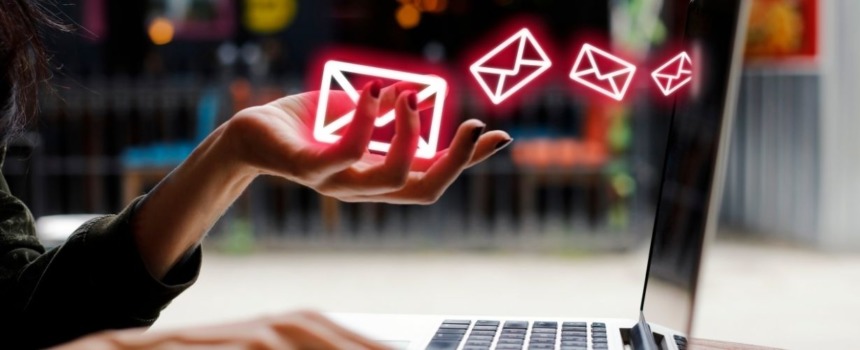The beauty of digital marketing is that you can automate many processes in order to focus on strategy and results. Email marketing automation is one of the most valued tools a marketer can have because it saves time while boosting engagement and increasing revenue.
According to a study from VentureBeat, 80% of marketing automation users saw an increase in their number of leads. As you can see, when done right, this tool can be the competitive edge that helps you grow your business.
Even though automation seems like it lacks personal touch, the reality is quite the opposite. Implementing automated email campaigns is all about personalization and improving the customer experience. With that in mind, today we will share with you the top 5 best practices for email marketing automation that will help turn new contacts into qualified leads.
#1 Establish personalized customer journeys
An email automation software helps you gather information about your audience, organize it efficiently, and create relevant subscriber categories. Behavioral data obtained on your website and other integrated platforms can be used to segment your list and deliver customized email campaigns for each one.
Depending on the nature of your product or service, your team can set up a sequence of steps that a new subscriber needs to go through in order to make a purchase. In case you have multiple products and services, you can divide your subscribers based on the product category they are most interested in.
For instance, if they subscribed to your list in order to download a free eBook with vegan recipes, then you will only send them vegan-related content from now on. Receiving recipes with meat products is likely to turn them away and make them unsubscribe from your list. Sending your subscriber’s email campaigns personalized to their interest or lifestyle will make them feel more connected to your brand.
For each segment of your audience, you can create an automated chain of emails that responds to their actions and helps them move through the lead qualifying process. Start with a welcome email, then send them newsletters and offers tailored to their previous experience.
#2 Use A/B testing
There is a tendency to relax when you set up email marketing automation. You might think that as long as your subscribers are receiving emails, then they are engaged. In reality, the true goal of automating processes is to give you more time to analyze your strategy and improve where you can.
A/B testing is a great method to use to refine your email campaigns and increase positive KPIs. With split testing, you set up two sub-segments in your list and send out two emails to notice the difference in open rates, click-through rates, and conversion rates based on the element you change. You can test out subject lines, call to action, design, landing pages, time of delivery, personalization, and more.
#3 Create re-engagement email campaigns
As we previously mentioned, an automation program can help you collect data about your audience in order to gain insight into their experience. For example, you can see which subscribers interact with your content and which don’t. For people that have not been engaging with your emails, you can create re-engagement email campaigns.
Depending on your business and marketing goals, this email can include high-quality information, free resources, and even offers. You can include a link to update their email preferences, such as the frequency of emails they receive and the topics they are interested in. This way, even though they do not receive seven emails per week, at least you know they will open and enjoy the one email they opted for.
Check out this guide about re-engagement email examples.
#4 Focus on delivering quality content
Even though email marketing automation is an exciting tool that can help you achieve your goals, the key to success is still quality content. Now that you don’t have to spend time sending individual welcome emails, it’s best to use this time to improve your copy and determine what your subscribers want to read.
Take a look at your KPIs and see what performs best, then think about how you can build on your success. Conversely, see what email campaigns have the worst results and think of how to change that content to better resonate with your audience.
You can even go a step further and include a quick survey in an email and ask the subscribers directly what type of emails they would like to receive.
Everyone receives dozens of emails every day. Therefore, you do not want to be annoying your content. Taking a heartfelt approach and letting them know you want to provide the best experience for them will go a long way.
#5 Use lead scoring
One easy way to tell which contacts can be transferred to the sales team as leads is by setting up a lead scoring model. This process assigns a number to each action the subscriber takes based on how relevant that is to them becoming a lead.
For instance, a subscriber that opens their welcome email might get one point, while one that clicks on a free trial offer receives ten. All of their actions will add up to a total score.
You can work on the lead scoring model with your sales team and set up a base score that signals a contact needs to be transferred in the sales lead section of your automation platform. Make sure to follow the marketing and sales funnel to determine what scores represent awareness, interest, consideration, and ultimately intent.
If you implement these five best practices in your email marketing automation plan, you are sure to see more qualified leads from your campaigns. Just remember that the more automation you include in your strategy, the more you need to be paying attention to the results of the campaigns and make changes where necessary.











Comments